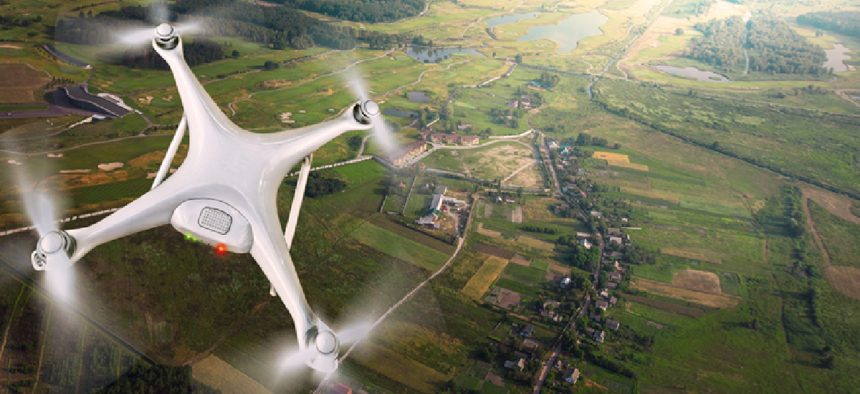FAA makes headway in drone integration


Connecting state and local government leaders
The Federal Aviation Administration has approved key commercial unmanned aircraft projects and expanded drone research and integration programs.
The Federal Aviation Administration has signed off on approvals for key commercial unmanned aircraft projects and expanded drone testing programs.
The agency granted a "special airworthy certificate" to Amazon for its Prime Air package delivery service in the U.S., allowing Amazon to "operate its MK27 unmanned aircraft for research and development and crew training in authorized flight areas," an FAA spokesperson said in an emailed statement. The certificate is good for one year and renewable.
The latest version of Prime Air system has thermal, visual and ultrasonic sensors and can safely deliver packages under five pounds within a 15-mile radius in less than 30 minutes, Amazon Worldwide Consumer CEO Jeff Wilke told attendees at Amazon's Machine Learning, Automation, Robotics and Space (re:MARS) conference in Las Vegas. The service would come online "within months," he said.
In a separate development, the FAA said it worked with industry on standards for safe operation of a UAS over people. It issued a waiver to Colorado-based Hensel Phelps Construction Company to allow a DJI Phantom 4 drone fitted with a safety parachute to fly over people at its job sites. The drone is equipped with automatic engine shut-off and a parachute recovery system. The waiver could be a template for the wider use in the commercial unmanned aircraft systems market, it said.
ParaZero, the manufacturer of the SafeAir on-board drone safety system, said the technology independently monitors the aircraft's avionics system looking for anomalies and flight patterns. When a failure is detected, the company said its system stops the drone's rotor blades and deploys a parachute that prevents the aircraft from tumbling out of the sky in an uncontrolled decent.
In other drone-related news, the FAA announced that 100 more airports and control towers will be using the Low Altitude Authorization and Capability system that makes it easier for pilots of small commercial drones to get authorization to fly in controlled airspace. So far, LAANC is live at 600 airports and 100,000 LAANC authorizations have be processed by the FAA. The agency plans to upgrade the program so that recreational flyers will also be able to obtain authorization from the FAA to fly in controlled airspace.
Additionally the agency released a broad agency announcement "to partner with qualified commercial entities that will match our $6 million dollar budget to perform UAS-integration related work" at the seven UAS test sites, FAA acting Administrator Daniel K. Elwell said in a June 3 speech in Baltimore. The BAA calls for white papers on several topics of interest ranging from detect and avoid capabilities, geographic and altitude limitations, hazard alerts, flights over people and swarming operations with multiple small drones.
A version of this article was first posted on FCW, a sibling site to GCN.
NEXT STORY: DOE maps out quantum research centers




